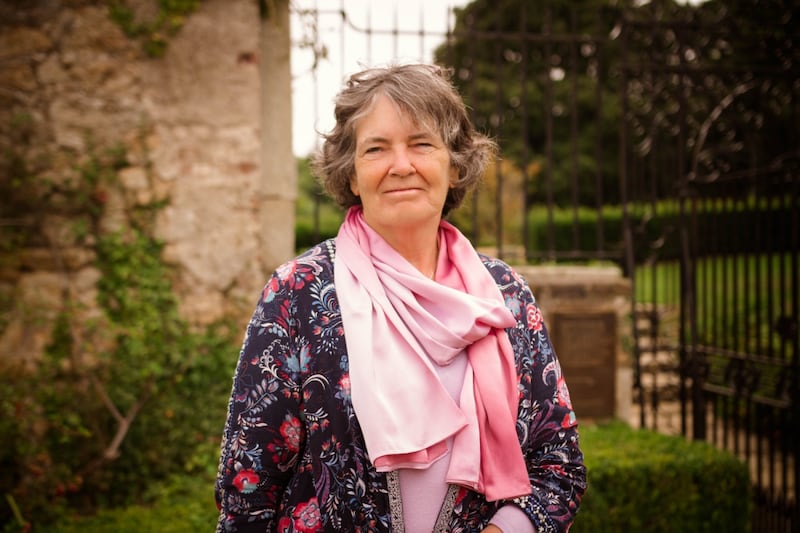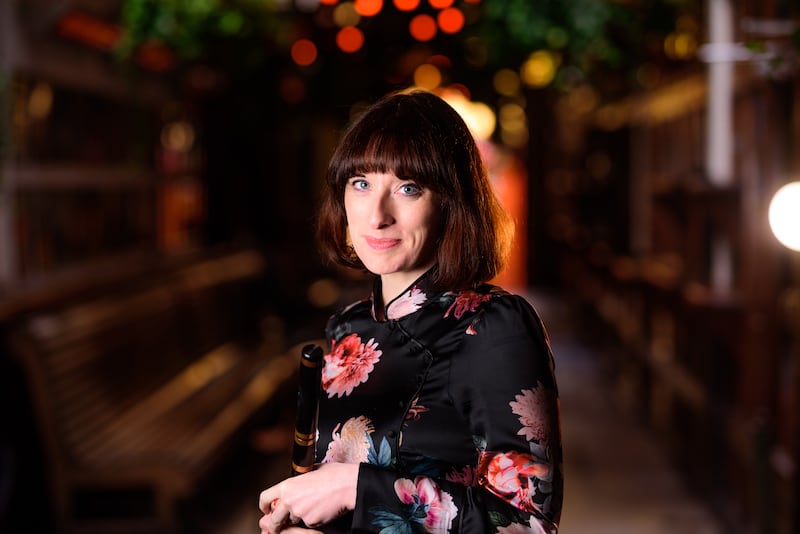Island life, and particularly that of the Blasket Islands, has loomed large in our literary history. For a place that never recorded a population above 200, An Blascaod Mór has produced a formidable body of literature, thanks to the writings of Tomás Ó Criomhthain, Muiris Ó Suilleabháin and Peig Sayers. These writers richly described the interweaving of music, song and dance in island life, but it wasn’t until Claddagh Records released Beauty an Oileáin in 1992, a collection of music curated by Ríonach Uí Ógáin, that those musicians and their music reached the ears of listeners beyond the confines of west Kerry.
The island was evacuated in 1953, when the remaining islanders moved to the mainland. Singer and accordion player Breanndán Begley was deeply connected to the music of the islands and played no small part in sharing their tunes and songs, influenced in particular by the music of Muiris Ó Dálaigh.
Now, Claddagh Records has taken the decision to reissue this extraordinary collection of Blasket island music, in tandem with an updated and expanded hardback with lovingly researched and updated notes on all of the musicians. It has also invited descendants of the islanders who are contemporary musicians to contribute to the collection, past and present coalescing to offer further colour and shade on the music of this most storied of our islands.
Ríonach Uí Ógáin, former director of UCD’s National Folklore Collection, is the force behind the original and current publications, and the intervening 30 years have done nothing to dim her enthusiasm for Blasket island music and song.
A Dublin scam: After more than 10 years in New York, nothing like this had ever happened to me
Poet Grace Wilentz: ‘Ireland has been very generous to me. There’s an abundance of fresh air and bookstores and intellectual stimulation’
The top 25 women’s sporting moments of the year: top spot revealed with Katie Taylor, Rhasidat Adeleke and Kellie Harrington featuring
Former Tory minister Steve Baker: ‘Ireland has been treated badly by the UK. It’s f**king shaming’

“My first visits to Corca Dhuibhne were in the 1960s,” she says, “and I was fascinated by the people, and the music and the scenery on the mainland. Then I visited the Blasket island, and of course it’s a place of particular beauty. I was fortunate to meet some former Blasket islanders during my time there and to hear their music, and following those early years I became a field collector and archivist, and I started making recordings that were related to my own particular field of interest: song in Irish and music.”
The original impetus for releasing a recording came from a conversation that Ríonach had with Tom Sherlock, of Claddagh Records. Tom suggested the possibility of a series of CDs of music and song of the islands of Ireland, and Ríonach’s field work led to record label’s release of the Blasket island recordings.
‘I realised then how central music, song and dance were to the very fabric of life on the Blasket islands’
“I had read the three books most closely associated with the Blasket islands: An tOileánach by Tomás Ó Croimhthain, Peig by Peig Sayers and Fiche Bliain ag Fás by Muiris Ó Suilleabháin,” Ríonach says. “I realised then how central music, song and dance were to the very fabric of life on the Blasket islands. There are very few paragraphs or pages in any of those works that don’t mention the role of music and how it was interwoven in people’s daily lives. I was very privileged to meet some of the former Blasket islanders who had moved to the mainland: people like fiddle player Seáinín Mhicil Ó Suilleabháin, who talked to me about making fiddles and about the music of the Blasket islands.”
What sets this extraordinary collection apart is the extent to which it captures the breadth and depth of the music that emerged from this tiny island, and how central it was to daily life.
‘A revelation’
“I think that people who mightn’t have known about the importance of music and song were surprised that you could actually listen to recordings of Blasket islanders,” Ríonach says, recounting the reaction that met the original release of the collection. “Some of the recordings captured the atmosphere of singing songs in a way that hadn’t have been captured previously. Particular pieces of music are associated with the island and I think that might have been a revelation as well.”
Listening to Peadaí Sheáisí singing An Goirtín Eorna, it’s remarkable how both singer and song conjure images all at once deeply rooted in the island, yet shot through with a universality that suggests a kinship with musicians from Mali to New Orleans. This is music that speaks to listeners far beyond the confines of Corca Dhuibhne.
Ríonach recognised the resonance of this music when she first heard it.
“There’s no doubt that it’s very universal,” she says. “Music and song were acquired unconsciously almost, and the music and songs were adapted to suit the psyche or thinking of the Blasket islanders. Beannacht ó rí na hAoine [A blessing from God, also sung by Peadaí Sheáisí] for example, was adapted. It was about emigration and could have been sung in almost any part of Ireland, but was adapted to suit leaving the Blasket islands, which must have been a very significant factor in the life of the Blasket islanders, and many of the songs are well-known love songs but might have a slight adaptation which would give them a great Blasket island sense.”
In contrast to the original publication, this collection recognises the names by which singers and musicians were known locally.
“A difference between the 1992 and 2022 releases is that precedence has been given in 2022 to people’s local names, such as Peaidí Sheáisí, Áine Cheaist etc. the kind of naming custom that is still very much practised in the Gaeltacht,” Ríonach explains. “In the earlier release, the more ‘official’ name was used e.g. Pádraig Ó Cearnaigh and Áine Uí Laoithe.”
‘Dad used to tell us you could always tell the islanders when they were walking around town, because they would walk one behind the other'
Aoife Granville is one of the contemporary contributors, along with her sister, Deirdre, to this new collection. A fiddle and flute player as well as a singer, Aoife has a Ph.D in folklore and ethnomusicology. A native of Dingle, she’s steeped in the music of the Blaskets.

“We always heard a lot from our dad, but from my grandmother as well because her sister married into the island, and died in childbirth, so my granny went over and lived there for a number of years,” Aoife says, recounting the circumstances that must have transformed her grandmother’s life at the time. “There was always a great connection with the islands in the stories we heard. Dad used to tell us you could always tell the islanders when they were walking around town, because they would walk one behind the other, as they would have done on the island.”
For Aoife, hearing the island music as a distinct collection underscored the richness of the islanders’ lived experience in so many ways.
‘Strong connection’
“I have a very vivid recollection of Beauty an Oileáin coming out the first time, because while I’d have heard some of them played on Raidió na Gaeltachta, I hadn’t heard them highlighted so clearly, and so well. So I always felt a strong connection and the more I got into playing slow airs and songs, I just loved them, and loved that they had traditional fiddle-making on the island and that they were amazing craftspeople too.”
Unsurprisingly, songs and airs with a maritime theme are writ large in the islanders’ repertoires. Port na bPúcaí is a celebrated slow air, beloved of the late Tony MacMahon and more recently revisited by Muireann Nic Amhlaoibh, and the album’s title comes from a song written in celebration of a naomhóg (currach) race that featured a naomhóg by the name of Beauty.
“I love the fact that there’s a song written about a naomhóg race!” Aoife says, laughing. “I think it’s amazing. You can hear the rhythm of the rowing in some of the songs and the music. I always imagined that a lot of them sang songs while out rowing. So I think the sea had an impact on both the songs and the rhythms of the music. And I loved the connection with the underworld that they often had, and the piseogs around the sea. For example, it was a very bad omen if they heard a woman whistling on the day before they went out on their naomhóga.”
The inclusion of three songs from Róisín Ní Chéileachair adds further riches to this updated collection.
“The chain hasn’t been broken,” Ríonach says, with a mixture of satisfaction and relief. “Róisín Ní Chéileachair is a granddaughter of Dálaigh (Muiris Ó Dálaigh), who plays the accordion. There are also archival recordings of Dálaigh that hadn’t been published before where he talks about Port na bPúcaí and lilts it. So there’s a lot to discover here.”
Beauty an Oileáin, published by Claddagh Records, will be launched at Ionad an Blascaod on August 4th. claddaghrecords.com





